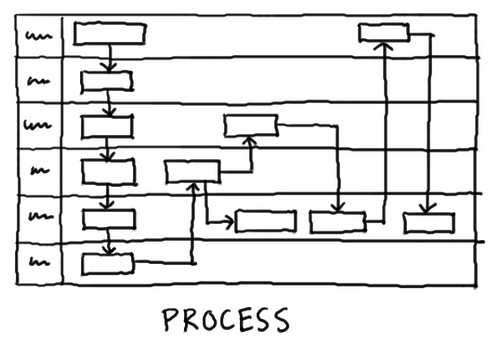If you’ve been checking in on the Library over the past couple of weeks, then you know that I’ve started uploading the chapters to my current novel Alexium—and I’m guessing that you’ve also noticed the slightly lower quality of the writing in Alexium as compared to Hunters of Shadows. I expected this, and even gave warning about it in the introduction to Alexium, but I feel like I should go a little more in-depth as to why the writing in Alexium isn’t as good.
Yeah, that was a lot of links… I’m pretty sure I’m done with those now… Pretty sure.
Anyways…
Writing is a lot like sculpting—I’m not making this up, it’s is a commonly held belief—and it’s true. The reason why the Alexium you’re reading in the library isn’t quite up to my standards, is because my writing process—which happens to be a lot like the sculpting process—hasn’t had a chance to completely run its course yet.
Don’t worry, I’ll explain…
—~~~:::~~~—
Stage one—raw materials.
The first stage in the sculpting process is to build up raw materials: or in other words, packing chunks of moist clay on top of each other to create a shapeless blob. The sculptor eventually molds their creation out of this formless mass. And without this initial, messy buildup, there wouldn’t be enough material available for the sculptor to create anything.
My writing process works the same way—with just one tragic difference: a writer doesn’t normally get to play with blobs of clay. The raw materials I use for my writing come from my own imagination—my dreams, my thoughts, and my ideas.
In stage one of my writing process I don’t even touch my keyboard: all my time is spent brainstorming ideas for the story—just like a sculptor packing on all that clay—the more raw materials I can accumulate in stage one, the easier my writing is.
Stage two—creating a general form.
In this stage the sculptor is takes the formless mass of clay and shapes it, roughly, into the general form that he desires for the finished product. Most of the time this form is barely recognizable at this stage, but this is perhaps the most important stage in the sculptures development. In stage two the sculptor gives himself a canvas on which they can create their true art.
In writers terms this would be when we create our outline.
Stage two is spent organizing all of my thoughts and ideas into a comprehensive structured outline that becomes the skeleton for my work. It’s not a story yet—it’s not even really writing yet—but it gives me a glimpse of what the story will eventually look like. Once I finish my outline, I know where the story begins, where it ends, and even some of what happens in-between.
Stage three—details.
This is the longest, most monotonous, most meticulous, and most rewarding stage for the sculptor. It involves hours of carefully engraving every tiny, intricate detail the artist sees fit, into the sculpture. This is where the sculptor’s vision begins to come alive, where their patience is tested, and where the formless blob of clay starts to look something like art.
AND this is where the majority of my writing occurs.
Here is where I take the skeleton created in stage two and slap some flesh on it. In this stage I try to take full advantage of both stage one and stage two—putting as many of the ideas from my brainstorming into my writing as I can, while still trying as best I can to stay true to my outline. My main goal with stage three is to take all the raw material, and work it into something that looks kind of like a story.
Stage four—polish.
The final stage. The sculpture is practically finished and all that’s left to do is to add some finishing touches: some final cuts to highlight the areas which the sculptor is most proud of, and, if course, a heavy layer of polish to give the sculpture some shine. When all this is accomplished, the sculptor can finally take a step back from his work and look on his finished piece of art with an approving eye.
Of all the stages in my writing process, this is my favorite: “polishing” to a writer is the same as editing.
This is where, in my opinion, the true talent of a writer shines. Up until this stage I’ve been working hard to build up something that could pass as a story—It’s rough around the edges, somewhat inconsistent, and only loosely held together at best. But in this final stage, I get to take that rough story and refine it into something beautiful.
There’s a quote that says this so much better than I believe I ever could…
Writing without revising is the literary equivalent of waltzing gaily out of the house in your underwear. —Patricia Fuller
You wouldn’t walk outside without your clothes on, a sculptor wouldn’t call his work finished without putting on that final layer of polish, and I wouldn’t want to publish a novel without a heavy dose of editing.
—~~~:::~~~—
Alexium, as you know it, is currently somewhere near the beginning of stage three in my writing process: the writing is still very loos, and extremely wordy (as my editor friend loves so much to point out) This is mostly because most of Alexium as a whole, hasn’t even reached stage one yet, I’ve barely even written a third of the story so far) but also because I haven’t invested enough time into the story to make it as polished as Hunters of Shadows was.
So there’s your explanation. Writing, like sculpting, is a long process—and obviously, Alexium still needs a lot of work—but the final result, when I put on those final edits and dress it up nice before I send it out into the world, will be well worth the long wait.




